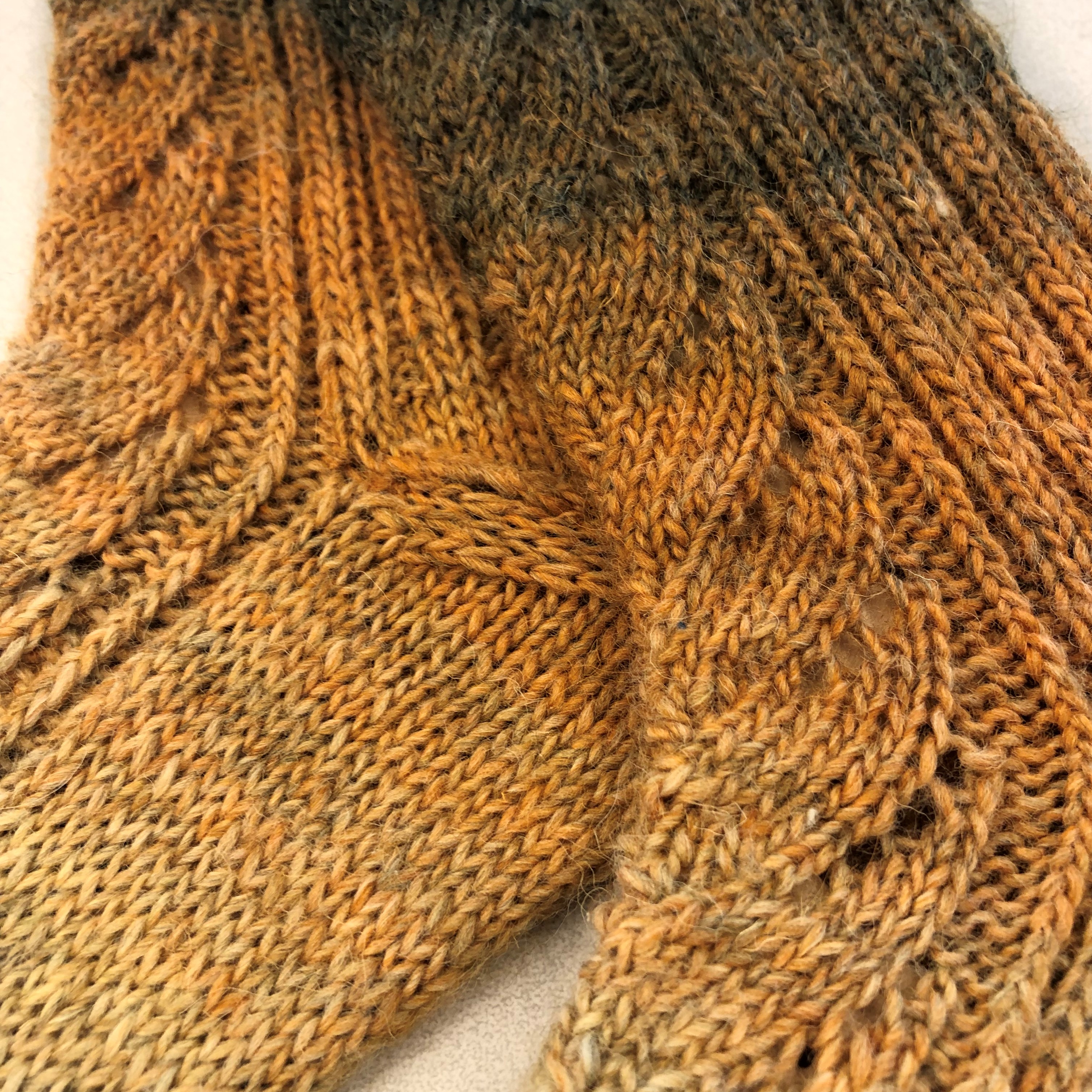Advanced student motivation in craft teacher education
Learning new yarn crafts at university study courses
DOI:
https://doi.org/10.7577/formakademisk.5384Emneord (Nøkkelord):
craft teacher education, student motivation, university pedagogy, yarn crafts, flipped learningSammendrag
This study investigates student craft teachers’ motivational issues within the course frameworks covering yarn crafts. The data consist of materials gathered from two bachelor-level university courses, which both utilized flipped learning as their pedagogy framework for learning and teaching crafts. Advanced-level student craft teachers participating in the courses (N=15+4) set their own learning objectives to reflect the general course targets defined by the course curriculum. The objectives, self-assessments, course work and course-end surveys were acquired as research data and analysed by thematical qualitative analysis, to obtain knowledge of extrinsic and intrinsic motivations. In line with Self-Determination Theory used as a theoretical framework of the study, the results suggest that possibilities to finetune course objectives to meet students' personal skills and resources were considered crucial for study motivation. Craft learning embraced realization of one’s effort, inner potential and values, resulting in student satisfaction about receiving personalized attention and instructions for their own study projects. Hence, the results enhance a more detailed understanding of student diversity and related motivational issues that can promote the equity of education.
Referanser
Bergman, J., & Sams, A. (2015). Flipped learning: Gateway to student engagement. International Society for Technology in Education.
Braun, V., & Clarke, V. (2006). Using thematic analysis in psychology. Qualitative Research in Psychology, 3(2), 77–101. https://doi.org/10.1191/1478088706qp063oa
Brooks, L., Ta, K. H. N., Townsend, A. F., & Backman, C. L. (2019). “I just love it”: Avid knitters describe health and well-being through occupation. Canadian Journal of Occupational Therapy, 86(2), 114–124. https://doi.org/10.1177/0008417419831401
Corkhill, B., Hemmings, J., Maddock, A., & Riley, J. (2014). Knitting and well-being. Textile, 12(1), 34–57. https://doi.org/10.2752/175183514x13916051793433
Deci, E. L., & Ryan, R. M. (2015). Self-Determination Theory. In J. D. Wright (Ed.), International Encyclopedia of the Social & Behavioral Sciences, (2nd ed., pp. 486–491). Elsevier. https://doi.org/10.1016/B978-0-08-097086-8.26036-4.
Johnson, J. S., & Wilson, L. E. (2005). “It says you really care”: Motivational factors of contemporary female handcrafters. Clothing and Textiles Research Journal, 23(2), 115–130. https://doi.org/10.1177/0887302X0502300205
Kenning, G. (2015). “Fiddling with threads”: Craft-based textile activities and positive well-being. Textile, 13(1), 50–65. https://doi.org/10.2752/175183515x14235680035304
Kiger, M. E. & Varpio, L. (2020). Thematic analysis of qualitative data: AMEE Guide No. 131. Medical Teacher, 42(8), 846–854, https://doi.org/10.1080/0142159X.2020.1755030
Kokko, S., Almevik, G., Bentz Høgseth, H. C., & Seitamaa-Hakkarainen, P. (2020). Mapping the methodologies of the craft sciences in Finland, Sweden and Norway. Craft Research, 11(2), 177–209. https://doi.org/10.1386/crre_00025_1
La Guardia, J. G. (2009). Developing who I am: A self-determination theory approach to the establishment of healthy identities. Educational Psychologist, 44(2), 90–104. https://doi.org/10.1080/00461520902832350
Liddle, J. L., Parkinson, L., & Sibbritt, D. W. (2013). Purpose and pleasure in late life: Conceptualising older women's participation in art and craft activities. Journal of Aging Studies, 27(4), 330–338. https://doi.org/10.1016/j.jaging.2013.08.002
Lin, Y. G., McKeachie, W. J., & Kim, Y. C. (2003). College student intrinsic and/or extrinsic motivation and learning. Learning and individual differences, 13(3), 251–258. https://doi.org/10.1016/S1041-6080(02)00092-4
Myllys, R. (2020). Spiritual yarning: Craft-making as getting along in everyday life. Journal of Religion in Europe, 13(1–2), 121–143. https://doi.org/10.1163/18748929-13010007
Olev, A & Alumäe, T. (2022). Estonian Speech Recognition and Transcription Editing Service. Baltic Journal of Modern Computing, 10(3), 409–421. https://doi.org/10.22364/bjmc.2022.10.3.14
Porko-Hudd, M., Pöllänen, S., & Lindfors, E. (2018). Common and holistic crafts education in Finland. Techne Series - Research in Sloyd Education and Craft Science A, 25(3), 26–38. https://journals.oslomet.no/index.php/techneA/article/view/3025
Pöllänen, S. (2015). Elements of crafts that enhance well-being: Textile craft makers' descriptions of their leisure activity. Journal of leisure research, 47(1), 58–78. https://doi.org/10.1080/00222216.2015.11950351
Sjöberg, B., & Porko-Hudd, M. (2019). A life tangled in yarns–Leisure knitting for well-being. Techne Series - Research in Sloyd Education and Craft Science A, 26(2), 49–66. https://journals.oslomet.no/index.php/techneA/article/view/3405
Stannard, C. R., & Sanders, E. A. (2015). Motivations for participation in knitting among young women. Clothing and Textiles Research Journal, 33(2), 99–114. https://doi.org/10.1177/0887302X14564619
Rusiñol-Rodriguez, J., Rodriguez-Bailón, M., Ramon-Aribau, A., Torra, M. L. T., & Miralles, P. M. (2022). Knitting with and for others: Repercussions on motivation. Clothing and Textiles Research Journal, 40(3), 203–219. https://doi.org/10.1177/0887302X20969867
Ryan, R. M., & Deci, E. L. (2000). Self-determination theory and the facilitation of intrinsic motivation, social development, and well-being. American Psychologist, 55(1), 68–78. https://doi.org/10.1037/0003-066X.55.1.68
Ryan, R. M., & Deci, E. L. (2020). Intrinsic and extrinsic motivation from a self-determination theory perspective: Definitions, theory, practices, and future directions. Contemporary Educational Psychology, 61 (101860), 1–11 https://doi.org/10.1016/j.cedpsych.2020.101860
Wehmeyer, M., & Zhao, Y. (2020). Teaching students to become self-determined learners. ASCD.

Nedlastinger
Publisert
Hvordan referere
Utgave
Seksjon
Lisens
Opphavsrett 2023 Anna Kouhia, Tellervo Härkki

Dette verket er lisensiert under Creative Commons Attribution-NoDerivatives 4.0 International License.
- Forfatteren(e) beholder sin opphavs- og kopieringsrett til eget manuskript, men gir tidsskriftet varig rett til 1) å fremføre manuskriptet for offentligheten i den opprinnelig publiserte digitale form, og 2) å registreres og siteres som første publisering av manuskriptet.
- Forfatteren må selv forvalte sine økonomiske kopieringsrettigheter overfor eventuell tredjepart.
- Tidsskriftet gir ingen økonomisk eller annen kompensasjon for innsendte bidrag, medmindre det er gjort særskilt avtale om dette med forfatteren(e).
- Tidsskriftet plikter å arkivere manuskriptet (inklusive metadata) i den opprinnelig publiserte digitale form, i minst ett dertil egnet åpent tilgjengelig langtidsarkiv for digitalt materiell, som for eksempel i de norske universitetenes institusjonsarkiv innen rammen av NORA-samarbeidet.
Verket vil bli publisert OpenAccess med en Creative Commons 4.0-lisens som tillater alle å lese, dele og tilpasse innholdet, også kommersielt, under lisensvilkårene:
Dette verket må tilskrives/ krediteres på riktig måte, en lenke må gis til CC-BY 4.0-lisensen, og endringer som er gjort må angis på en rimelig måte, men ikke på noen måte som antyder at lisensgiveren støtter deg eller din bruk.



